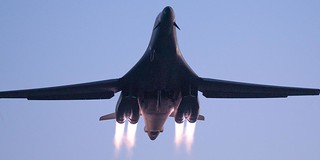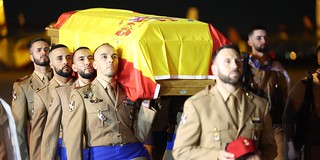The details that we can see in a CASA C-101 Aviojet airplane seen from very close up
Known as "Culopollo" among Spanish pilots, the CASA C-101 Aviojet is a very popular aircraft in the Spanish Air Force.
Many Spanish pilots have been trained on this training aircraft manufactured in Spain for decades, since the entry into service of the C-101 in 1980. Now, although this aircraft is in the process of being replaced by the Pilatus PC-21, the Aviojet is still active with the Patrulla Águila (Eagle Patrol) and with the CLAEX (Logistics Center for Armament and Experimentation). Yesterday, Fly By Wire Aviation published a video showing very nearby one of the C-101EB of the Águila Patrol, the Águila 8 (E.25-12, 79-12). In these images all the details of the plane can be seen so well that you could almost count its rivets:
You can see here some of the details that are observed in the video, and that are rarely seen in other videos and photos of these planes.

The curious fin that the navigation lights at the ends of the wings have. In this case we see the green light on the starboard wing. This fin is a screen to avoid distracting pilots with the glare of navigation lights during night flights. Behind the cockpit we see the UHF/VHF communications antenna of the Magnavox RT-1168/ARC (UHF) and Wilcox AN/ARC-134 (VHF) transmitters.

The nozzle of the Garrett TFE731-5-1J turbofan engine. Coming out of the starboard side of the nozzle we see the tube of the smoke generating system. This tube injects the fluid from the humor system into the engine exhaust to generate the white, red or yellow trails that the Eagle Patrol uses in its displays.

The emblem of the 75th anniversary of the General Air Academy (1943-2018), painted next to the port air intake. Below we see a small hatch with this text: Central elec para carga combustible a presión" (Electric central for pressurized fuel loading).

The starboard side of the cockpit. We see the two circular static shots and a panel with text that says: "Acceso al equipo de navegación y comunicación" ("Access to navigation and communication equipment", there is another similar text on the port side) . On this panel we see the aircraft number, 79-12 (because it is from the 79th Wing).

The port side of the cockpit. The two cockpit cupolas open to starboard. We see the inverted hazard warning triangle with the sign"Asiento lanzable" ("Ejectable seat"; the C-101 carries two Martin Baker Mk-10 ejection seats). Below we see a panel with this text: "Acceso a central generadora y distribuidora" ("Access to generating and distribution central"). Next to the domes we can see the two opening levers. To the right of the ladder we see an orange symbol that looks like a "2" and another symbol in the shape of an inverted "V". It is a point to attach a hitch when the plane has to be raised with slings. There is another similar symbol further back, on the fuselage, just behind the wing.

The upper part of the drift. We see the emblem of the General Air Academy at the top of the rudder and the VOR antenna, in white, a radio navigation aid system. This antenna also includes the aircraft's ILS localizer. A VHF antenna is housed at the top of the drift. We also see the red anti-collision light, and looking back, in the yellow stripe, we see the white aft navigation light.

The lower part of the drift. The black Saint Andrew Cross in white, typical of Spanish Air Force aircraft, is painted on the rudder compensator.
|
Don't miss the news and content that interest you. Receive the free daily newsletter in your email: |
- Most read
- US F-35A fighters flying with Polish F-16s over Poland at a time of great tension
- The brutal 'touch and go' of a Lufthansa Boeing 747 at Los Angeles Airport
- The deployment of Spanish soldiers of the Regulars and BRILAT near Russian territory
- Eurofighter vs F-35: the opinions of professional pilots on these advanced fighters
- The firearms used by the Pontifical Swiss Guard, the smallest army in the world
- Sierra Army Depot, a huge United States base with hundreds of Abrams tanks stored
- Portugal confirms that it has begun its transition to the F-35 and indicates bad news for Spain

 ES
ES







Opina sobre esta entrada: